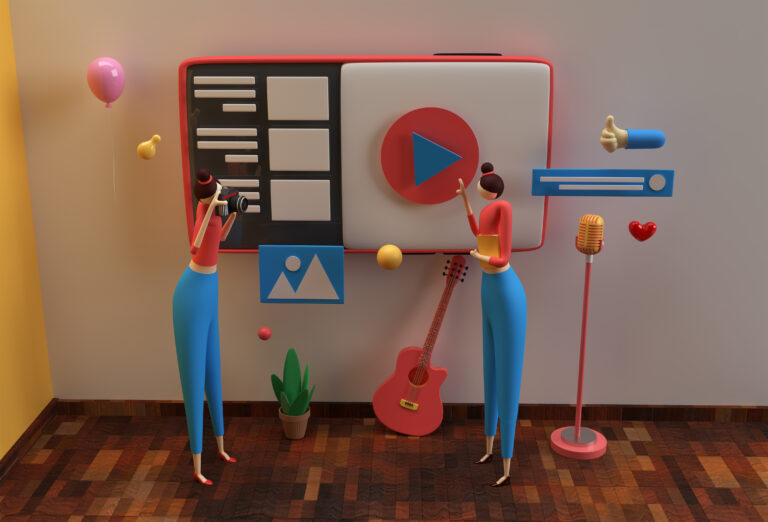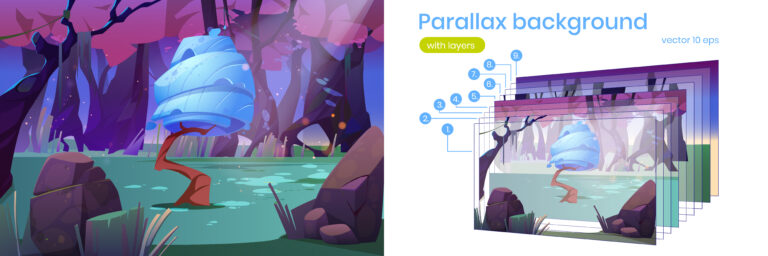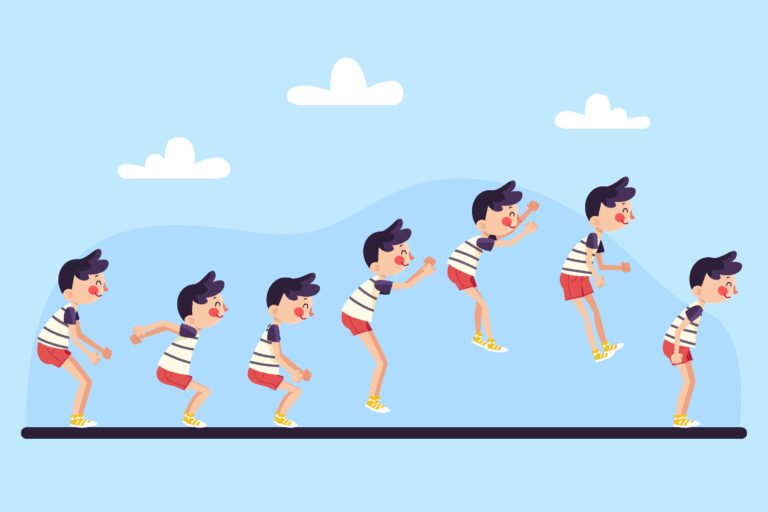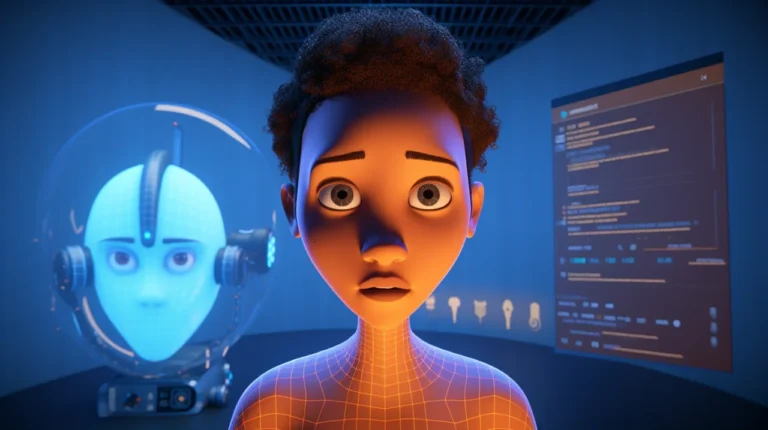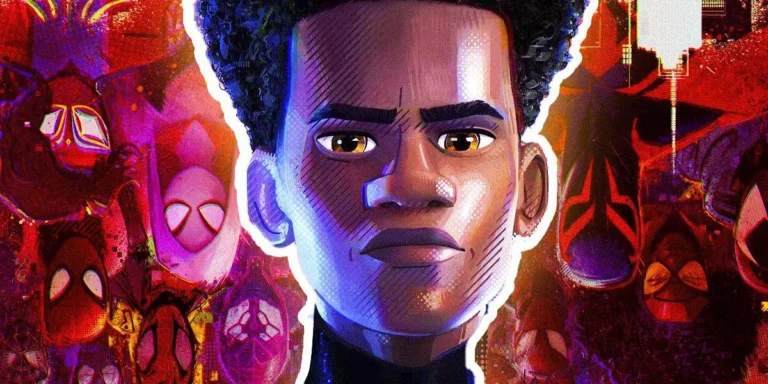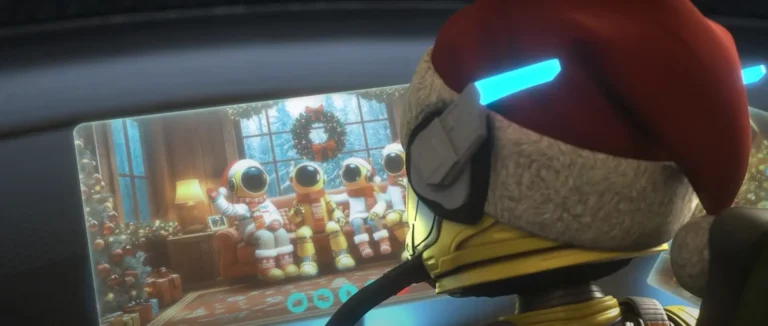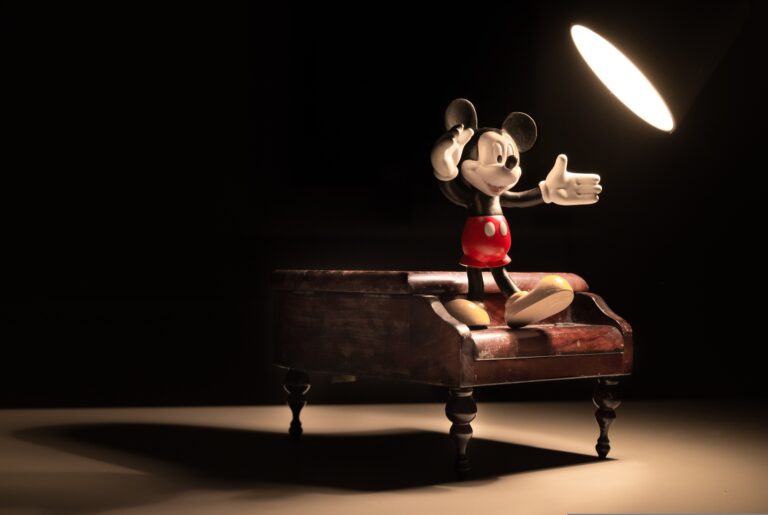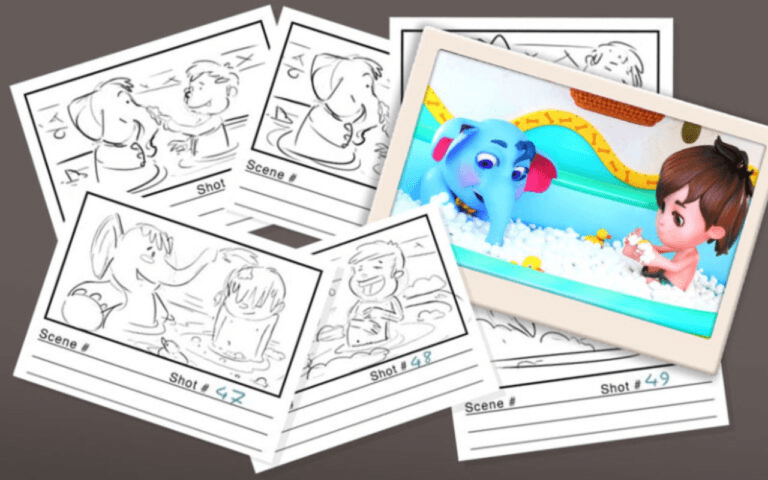There are two main approaches to animation based on the 12 Principles of animation. The first is straight-ahead action since the animator will work straight ahead from his/her first drawing in the scene. The second one is called posed pose to pose. Here, the animator plans his action and draws the key poses first (often the action’s beginning and end drawing) and some other key moment between. Once the key poses are done, the breakdown and in-between drawings are added to fill the rest of the animation.
In this article, we will discuss both workflows, their usage, and benefits, plus the drawbacks of each, comparing the two so you will better understand each technique and how to use the given tool in the future.

Need Animation Services?
Visit our Animation Service page to see how we can help bring your ideas to life!
Straight Ahead Action in Animation
Animation captivates audiences by bringing illustrated worlds and characters to life through movements and character animation services. In straight-ahead action, the animator draws each frame of the sequence chronologically in order without a lot of pre-planning. This intuitive, frame-by-frame approach gives the character animation a wonderfully spontaneous, organic feel when done right.
Straight Ahead in Practice
With straight-ahead action, animators start by drawing the first frame of action and then proceed to draw each frame in a linear manner. For instance, a character jumping will start with a crouched-down pose and then will be drawn to become the full action, ending with an airborne pose of the character at the peak. Or the character landing back on the ground.
There is no backtracking or rearranging. The animator draws each in-between frame following the one before it, developing the motion spontaneously. This creative, improvisational approach allows for adjustments in timing and movement along the way rather than being confined to a pre-set beat.
Freedom reigns in straight-ahead action. Drawings can stay loose and rough, focusing on capturing the feeling rather than cleaning up lines. The animator works quickly, pen dancing over the page to keep up with the energy and rhythm flowing through their imagination. Action lines visualize the trajectory of movements. As sketches build, the sequence begins to exhibit the life, the beat, and the emotion the animator intends.
Immersing themselves in the movement is key. Animators must feel the weight, timing, and impact of actions in their mind and body. They envision characters as real beings obeying the laws of physics, making the motion feel natural and believable. It’s about bringing a visceral sense of timing, weight, and appeal to the drawings through total absorption in the acting.
Techniques for Impactful Straight-Ahead Animation
To make the most of a straight-ahead animation workflow, animators incorporate certain techniques into their frame-by-frame drawing approach:
Exaggeration:
Stretching and overemphasizing movements add appeal, impact, and humor. A figure stretching and squashing as they prepare to jump packs more punch than stiffness. Fun, extreme expressions also liven up reactions and personality.
Anticipation:
An action is rarely done out of nowhere. Effective anticipation builds readiness for major actions through subtle windup motions, bringing more believability. A character shifting balance back before leaping forward shows a driving force.
Follow Through:
Actions naturally carry energy beyond the main action. A cloak floating or hair waving after the body stops conveys a follow-through that adds realism. Objects move independently of the body they are attached to.
Solid Drawing:
While working quickly, animators must ensure forms remain consistent, steady, and on-model. Figures need structure and form to move convincingly. The basics of drawing realistically apply even in stylized cartoons.
Appeal:
Appealing shapes, silhouettes, and poses make a huge difference. Characters feel more alive and inviting when their actions have visual appeal built in through body mechanics. Acting out the motions brings natural charisma.
Benefits and Challenges of Straight Ahead Animation
When executed skillfully, straight-ahead animation produces remarkable results not easily achieved through pose-to-pose or CGI. The benefits include:
Organic Feel:
The improvised, sequential workflow allows for a spontaneity and lifelike quality unattainable when every pose is pre-planned. Movements feel looser, more natural, and less mechanical.
Instinctive Rhythm:
Drawing shots frame-by-frame lets animators capture the visceral rhythms and beats they feel internally for the action at hand. The timing unfolds intuitively.
Personality:
The animator’s acting comes through as they draw, imbuing the character with a charm and appeal influenced by the actor’s personality. Spontaneity creates a personal signature.
Flexibility:
Timing and action can evolve as each frame builds off the last. Animators are free to adjust pacing and movement fluidly during the process.
However, straight ahead also poses challenges. Planning-oriented animators may find the lack of pre-set poses and reliance on improvisational acting intimidating or difficult. The risk of inconsistencies runs higher without concrete guideposts in place early. Once a sequence is drawn out straight ahead, it can be challenging to make major changes. The frames build on each other, so reworking one affects all those that follow. For these reasons, straight-ahead action benefits from an experienced hand guiding the sequence.

Understanding the Pose-to-Pose Workflow
The pose-to-pose process begins with planning out the animation using storyboards, animatics, or timing charts. These tools allow the animator to define the major storytelling poses before entering them as keyframes into the software. After setting the key poses, the animator can let the software automatically tween or interpolate all the frames in between. Additional tweaking might involve adding more keyframes for important in-between poses or adjusting the timing for better impact.
Another technique is to animate cyclic motions like walks, breaths, and blinks, which can then be reused. Animators may also use layering, where background elements and props are animated separately from the main character. This allows dividing up the workload for collaboration and iterating on individual parts in isolation.
Tools and Techniques for Pose-to-Pose
A variety of digital software packages enable pose-to-pose animation, like Animate, TVPaint, and After Effects. Onion skinning allows viewing previous and next frames for better continuity when setting keys. Interpolation settings control how the software tweens between two keyframes – options like linear, bezier, and step interpolation create different effects.
Different keyframe types give further control. Step keyframes retain a solid pose over a period of time. Linear and bezier interpolation provides smoother motion between keys. Hold keyframes and stop movement completely for a beat. Camera moves like pans and zooms can be easily incorporated too.
For 3D animation, rigging or setting up controls over character joints simplifies the posing process. Shape keys are predefined facial expressions that make lip-syncing and expressions easier by letting animators blend between them. Overall, digital tools expand the possibilities for pose-to-pose workflows.
Efficient Animation with Reusable Elements
One of the major advantages of pose-to-pose animation is that it greatly speeds up production time compared to traditional frame-by-frame techniques. Animators don’t have to redraw every single frame, just the important storytelling poses. The software does the heavy lifting of filling in the gaps. Cyclical motions can be reused over and over just by linking to the original animation.
This reuse also applies to background elements and props. For example, a walk cycle can be applied to a character walking across the screen while trees sway in a looping breeze cycle in the background. These layers of animation can be iterated separately and then combined in the final shot.
Having reusable animations and assets results in tremendous time savings. It also reduces unnecessary repetitive work for animators. The modular approach allows them to focus their efforts on the key poses that communicate the story and acting.
Flexibility and Collaboration
A major advantage of working pose-to-pose is the flexibility it provides. The timing and ordering of keyframes can easily be adjusted at any point rather than having to redo entire sequences. The iterative process gives freedom to experiment with different posing and timing until the motion feels right. Animators can revise and polish scenes much more quickly by tweaking keyframes rather than re-drawing full frames.
Collaboration also becomes easier with pose-to-pose. Separate animators can work on individual layers or assets. A character animator might team up with a prop or effects animator, combining their shots at the end. Complex, multilayered scenes can be broken down into elements handled by specialists.
Drawbacks of Pose-to-Pose Animation
Working in a pose-to-pose workflow can result in a lack of control compared to frame-by-frame animation. Without drawing every individual frame, there is less control over details and achieving fluidity between poses. The in-betweens generated automatically by software may contain inaccuracies or odd movements that would not happen if animated frame-by-frame.
Proper planning of the key poses is critical in pose-to-pose animation. Poorly planned keys with unclear breakdowns between them fail to communicate the story and intent clearly. Revisions become very difficult with a pose-to-pose process, as fixing one poorly planned sequence often requires redoing large sections of keys. Localized fixes on individual frames are trickier without drawing the full frames.
Depending on the interpolation method, pose-to-pose animation can lose some of the organic feel compared to hand-drawn frame-by-frame animation. The motion may become overly stiff or robotic depending on the spacing of keyframes and how the software tweens between them. Careless spacing of keys can cause unnatural or odd movements to occur between poses. The keys must adhere to the principles of animation to create lifelike motion.
Benefits of the Pose-to-Pose Workflow
The largest benefit of pose-to-pose animation is the speed it provides by eliminating redundant drawing. Animators only need to focus on hitting the key storytelling poses rather than getting bogged down drawing every frame. This significantly speeds up the production process. Cyclical motions and layered elements can be reused extensively, saving additional time compared to individually animating them repeatedly.
Pose-to-pose allows easier collaboration between animators, with different people able to work on separate pose layers that can be combined later. The workflow also provides more flexibility, as the timing and order of keyframes can be adjusted much more easily compared to re-drawing full sequences frame-by-frame. There is greater freedom to experiment iteratively until the motion feels right.
Working pose-to-pose enables animating more elements and layers at once compared to frame-by-frame. Well-planned keys clearly communicate the core storytelling poses. It allows animators to unleash their creativity on the key acting choices rather than bogged down drawing every frame.
Straight Ahead vs. Pose to Pose Animation
As these Techniques are both one of the 12 Principles of Animation, they both have their own usage but Animation requires using different techniques and workflows to bring characters and movements to life on screen. Two fundamental approaches are straight-ahead action and pose-to-pose.
In straight-ahead action, the animator draws each movement frame sequentially without planning too far ahead. For example, an animator creating a bouncing ball animation would start on the first frame and draw the ball squished on the ground. On the next frame, they would draw the ball, starting to move upward, and so on, bouncing the ball higher in each successive frame. This captures a lively, spontaneous, organic sense of movement well-suited to hand-drawn cartoon animation. Animators may lightly sketch some extreme poses first to define the overall arc of the action. But the in-between frames are drawn in order. This allows the motion to flow freely from the animator’s creativity in the moment. Legendary Disney animators like Milt Kahl used this technique in films like The Jungle Book.
In pose to pose, the animator plans out the key storytelling poses first that define the major beats and timing of the action. For instance, an animator creating a walk cycle would first draw the contact, passing, apex, and contact poses that describe the trajectory of the walk. These poses are the foundation of the timing. Then, the in-between frames would be drawn afterward to link the poses into continuous, believable motion. This enables a high level of control over the nuances of timing and spacing.
It’s well-suited to complex 3D CGI animation, requiring meticulous planning with many moving parts. However, the in-betweens must be crafted thoughtfully to avoid stiffness or floatiness in the final animation. Pixar excels at pose-to-play animation, using it in movies like Toy Story to allow precise choreography with multiple character interactions.
In practice, most animators blend these two techniques as appropriate for the needs of each shot or scene. Straight-ahead action lends the animation emotion and liveliness. Pose to pose enables intricate timing and staging. Keys provide important structure and planning, while straight ahead brings free-flowing inspiration to the animation. Employing either or both methods as the shot requires is key for animators to achieve their vision fully.

Conclusion
In conclusion, both straight-ahead action and pose-to-pose animation have their unique strengths. Straight ahead allows for lively, spontaneous motion with a handcrafted feel. Meanwhile, pose-to-pose enables intricate timing and control. In practice, most animators use a blend of these techniques as appropriate for each shot and production.
Planning out the key poses provides solid foundations, while straight-ahead action brings fluidity and appeal between them. Being able to employ either method is key. The animator’s mastery of these core techniques determines how convincingly they can bring their creations to life on screen through movement. In the end, it comes down to understanding the principles behind evocative animation and then utilizing the best workflow to achieve the desired look and feel.
